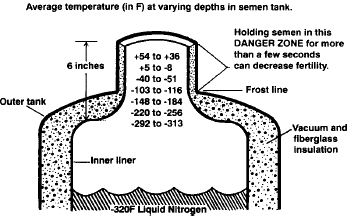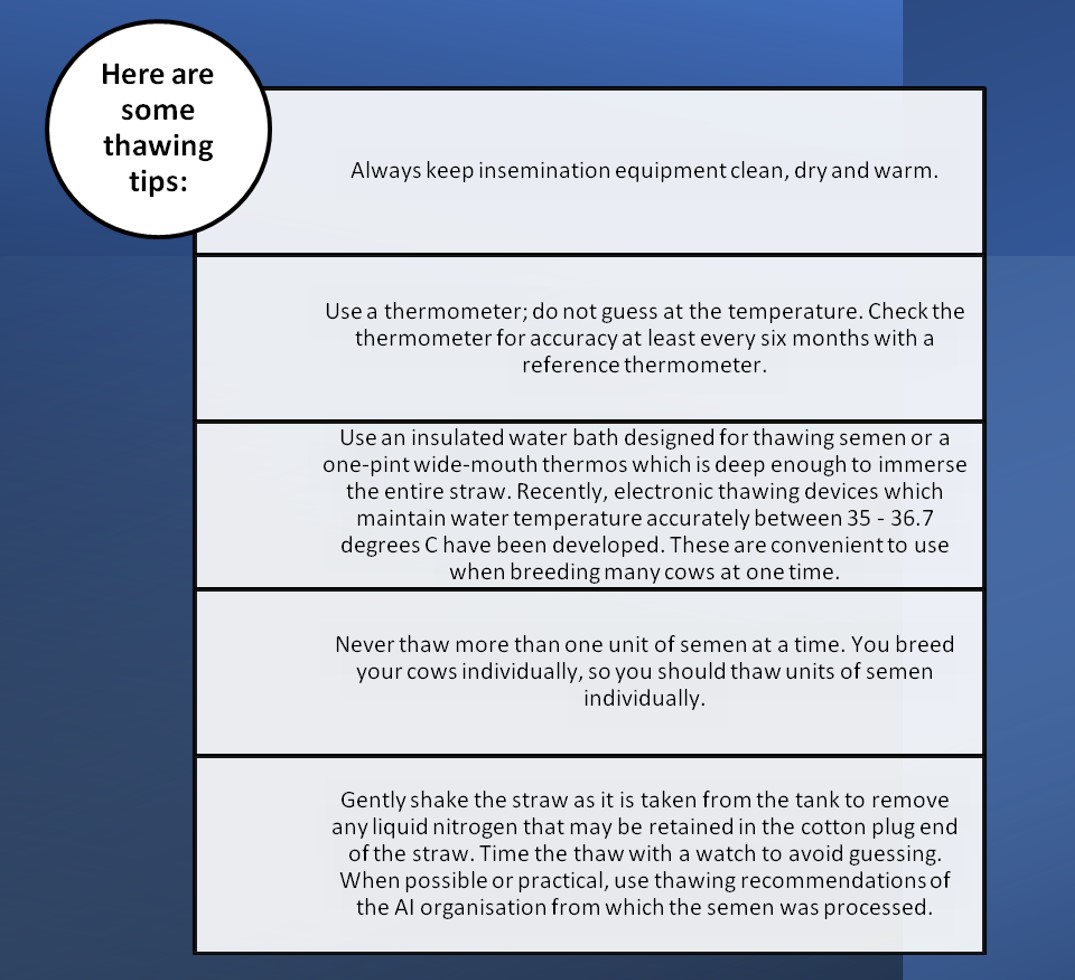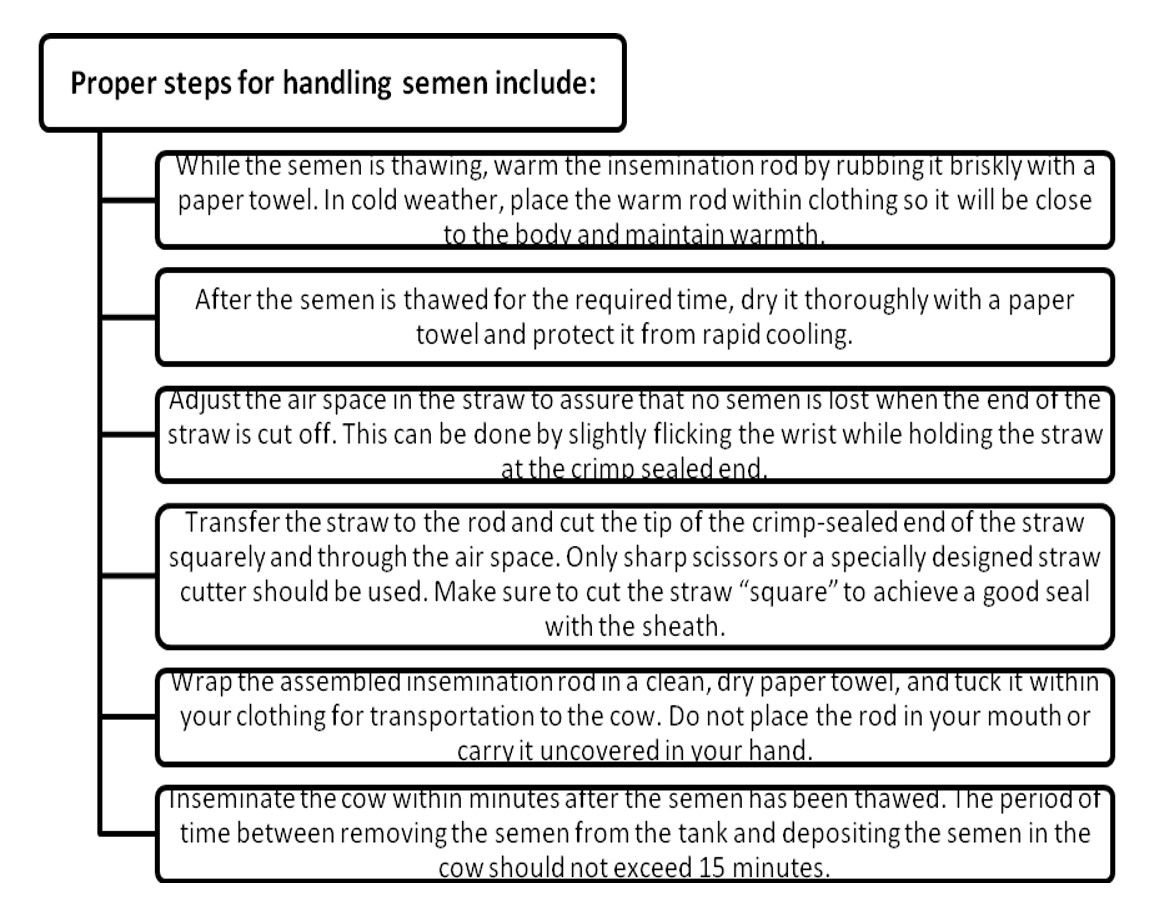In the typical farm semen tank, dangerous temperatures exist in the upper half of the neck tube.
Exposure to these temperatures can occur when trying to locate a specific unit of semen or when transferring semen from tank to tank. Thermal injury to sperm is permanent and cannot be corrected by returning semen to liquid nitrogen.
In order to minimise thermal damage:

Cross-section diagram of liquid nitrogen tank used to store semen.
Thawing Procedures
The correct thawing recommendation for semen in straws is not the same for all AI organisations. However, almost all organisations now recommend warm water thawing of straws for 10 to 60 seconds. For optimum results, follow the specific recommendations of the semen processor. Breeders may use semen from various AI organisations but practice only one thawing procedure. The National Association of Animal Breeders has recommended that, when in doubt, 90 degrees to 95 degrees for a minimum of 40 seconds should be used as a universal thawing recommendation.
A major concern with warm-water thaw is the danger of cold shock when the straw is mishandled after thawing. Cold shock is the permanent injury to sperm caused by a sudden decrease in semen temperature after thawing. It occurs when semen is thawed and then subjected to cold environmental temperatures before reaching the cow.
The severity of the damage depends on the rate and span of temperature drop. If precautions are taken to prevent cold shock, the advantage of warm thaw will be realized.

During Insemination
One of the most frequent chances for semen damage is during transport to the cow. After thawing, the semen temperature must be maintained as close to 35 degrees C as possible. Handling thawed semen and preparing the insemination rod should be done in a sheltered, heated area.

Semen Transfer

It is essential that frozen semen be handled and thawed carefully and properly in order to obtain anyone optimum results. It also is important to deal only with reputable, well-established AI organisations because their semen has been processed under standard, controlled conditions that are evaluated routinely.
Click here to view a video that explains semen handling procedures.
Click here to view a video that explains proper semen handling techniques.